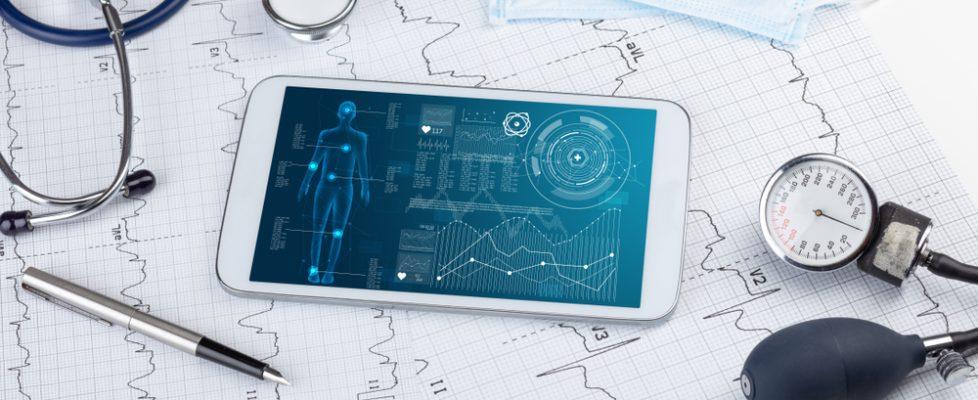The Promise of Technology to Solve for Healthcare’s Most Pressing Challenges
Hospitals across the nation are facing financial constraints and unprecedented staffing shortages. This situation is compounded by the growing need to provide skilled, resource-intensive care for sicker patients being admitted to hospitals’ general care units.
This situation is not only impacting clinical staff, who are overworked, stretched thin and reporting high levels of burnout, but patients, who are more likely to experience a harmful safety event due to inadequate working conditions.
“The intersection of fewer providers and sicker patients is challenging hospitals a great deal,” said Dr. Sam Ajizian, Chief Medical Officer of the Patient Monitoring Operating Unit at Medtronic.
A powerful, impactful strategy to address this challenging landscape is for hospital leaders to leverage technology, specifically remote monitoring, connectivity, and interoperability solutions.
The impact of remote monitoring
Technology — particularly, remote patient monitoring — provides clinical staff with a significant gift: more time with patients.
Right now, clinicians spend far too much of their shift on administrative tasks such as manual charting. They continuously check routine vital signs and manually input the information into the electronic medical record, leading to short, stressful and unsatisfactory interactions with patients.
Remote patient monitoring automates some of this work for caregivers by enabling the continuous capture of vital patient data, which is then uploaded to the EMR and put in the hands of caregivers in the most convenient format for them, such as on a desktop, mobile app or tablet.
As a result, remote patient monitoring can help reduce burnout for clinicians as it decreases the need for manual charting and supports more one-on-one time with patients.
“Remote patient monitoring frees up a lot of nursing hours3,5 where they can do what they went into the profession for — to talk to patients and give care. No provider went into healthcare to type on a computer,” Ajizian said.
The continuous capture of real-time patient data also allows clinicians to identify adverse patient trends earlier and intervene sooner, helping them improve patient outcomes overall.
In order to gather this data from patients continuously, the monitoring device, such as a wearable, must be comfortable for patients to wear. The BioButton multi-parameter wearable from BioIntellisense, part of Medtronic’s HealthCast portfolio, is small, with a self-adhesive, worn on the patient’s upper left chest, with up to 16 days of battery life. “The BioButton device offers an effortless user experience. Just stick it on and forget it” Ajizian said.

The important role of connectivity
While the device used to continuously capture patient vital sign information is key to the success of remote patient monitoring programs, so is connectivity. Clinicians must be able to access patient data anytime, anywhere, quickly and easily.
“You can have the best wearable in the world but if the data can’t be displayed where the caregiver wants it and how they want to see it, it’s useless,” Ajizian said.
To achieve this, remote patient monitoring systems should be part of the existing ecosystem of devices and workflows, including the hospital’s EMR.
The HealthCastTM Vital SyncTM remote patient monitoring system allows clinicians to remain connected to their patients wherever they are in the hospital. The system is designed to connect to hospitals’ EMRs and existing devices. Additionally, it provides clinicians with actionable insights through near real-time trend and alert data on patients wherever they prefer to see it including via desktop or mobile app.
The future of remote monitoring
Choosing a remote monitoring platform is a significant financial investment. In addition to considering the product features, hospitals should also factor in the quality of the partnership with the provider.
Hospitals must prioritize finding a partner that will offer long-term clinical, technical, education and maintenance support that puts patients and clinicians first. Medtronic understands the importance of partnering with hospitals to build sustainable remote monitoring programs.
“We meet the customer where they are, we fill in the gaps with the tech and we connect it in the easiest way possible,” Ajizian said.
Learn more about Medtronic’s HealthCastTM intelligent patient monitoring, a portfolio of remote monitoring, connectivity and interoperable solutions, here.
Footnotes
- Baker MA, Sands KE, Huang SS, et al. The Impact of Coronavirus Disease 2019 (COVID-19) on Healthcare-Associated Infections. Clin Infect Dis. 2022;74(10):1748-1754.
- https://www.jointcommission.org/-/media/tjc/documents/resources/patient-safety-topics/sentinel-event/sentinel-event-general-information-and-2021-update.pdf
- Bellomo R, Ackerman M, Bailey M, et al. A controlled trial of electronic automated advisory vital signs monitoring in general hospital wards. Crit Care Med. Aug 2012;40(8):2349-61.
- Stellpflug C, Pierson L, Roloff D, et al. Continuous physiological monitoring improves patient outcomes. Am J Nurs. 2021;121(4):40–46.
- Han WH, Sohn DK, Hwangbo Y, et al. Effect of a Wireless Vital Sign Monitoring System on the Rapid Response System in the General Ward. J Med Syst. 2022;46(10):64. Published 2022 Aug 26.
- Downey C, Randell R, Brown J, Jayne DG. Continuous versus intermittent vital signs monitoring using a wearable, wireless patch in patients admitted to surgical wards: pilot cluster randomized controlled trial. J Med Internet. Res. 2018;20(12):e10802
- Eddahchouri Y, Peelen RV, Koeneman M, Touw HRW, van Goor H, BrediS JH. Effect of continuous wireless vital sign monitoring on unplanned ICU admissions and rapid response team calls: a before-and-after study. Br JAnaesth. May 2022;128(5):857-863.
- Verrillo SC, Cvach M, Hudson KW, Winters BD. Using Continuous Vital Sign Monitoring to Detect Early Deterioration in Adult Postoperative Inpatients.J Nurs Care Qual. Apr/Jun 2019;34(2):107-113.
- Weller RS, Foard KL, Harwood TN. Evaluation of a wireless, portable, wearable multi-parameter vital signs monitor in hospitalized neurological and neurosurgical patients. J Clin Monit Comput. Oct 2018;32(5):945-951.

